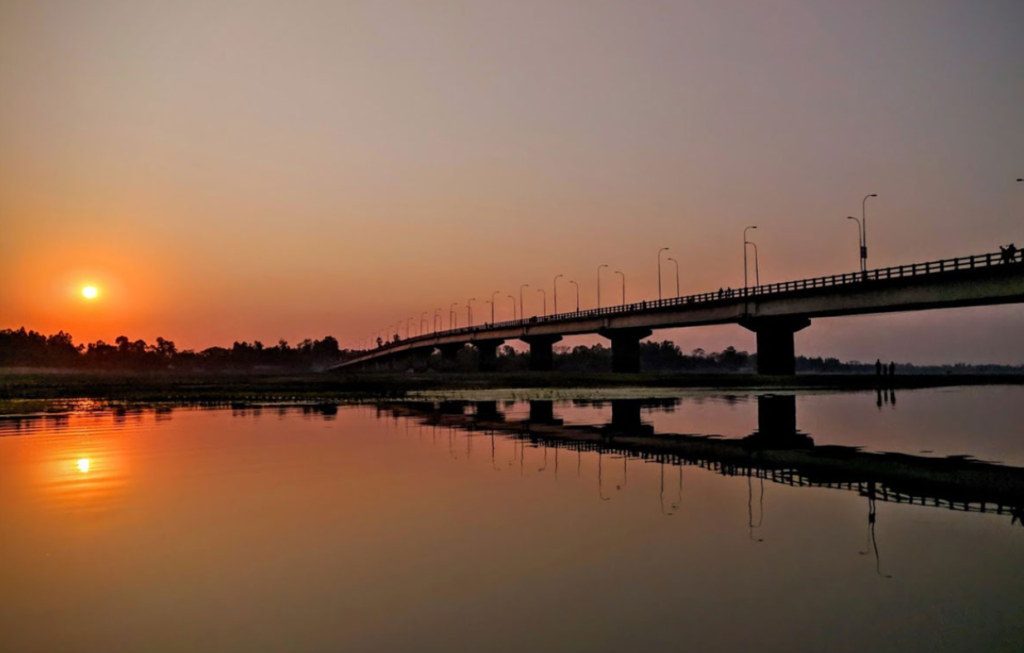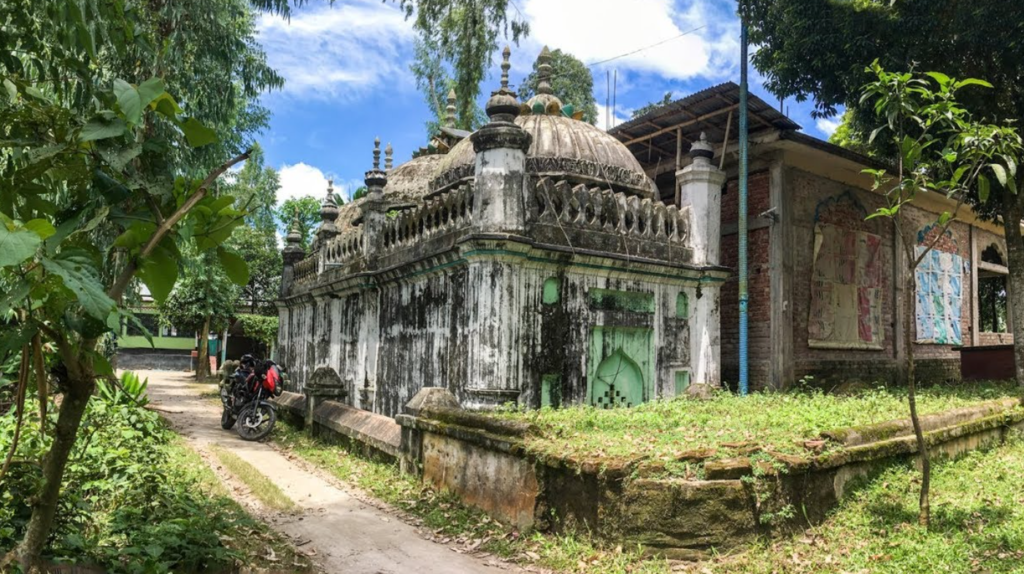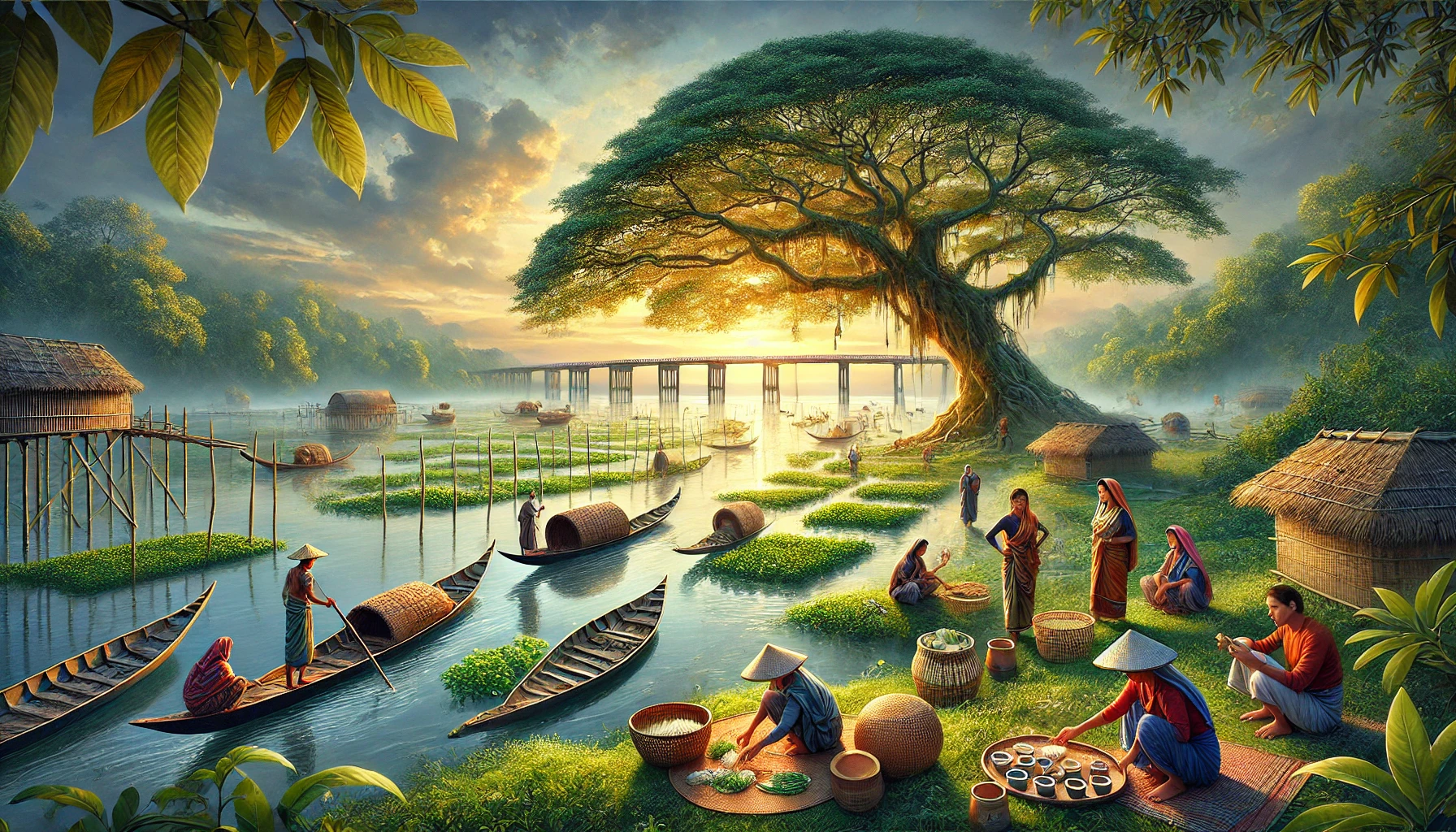Situated in the northern region of Bangladesh, Kurigram is a district known for its breathtaking rivers, fertile floodplains, and cultural diversity. Part of the Rangpur Division, Kurigram is defined by its close ties to the rivers that flow through it, shaping the lives, livelihoods, and landscapes of its people. As one of the districts located near the border with India, Kurigram is a unique blend of natural beauty, historical significance, and traditional rural life.
Geography and Climate: A Riverine Symphony
Kurigram is often called the “Land of Rivers” due to the abundance of waterways that define its geography. The major rivers include:
- Brahmaputra (Jamuna): One of the largest rivers in South Asia, flowing through Kurigram and supporting the livelihoods of countless communities.
- Teesta: A river known for its beauty and significance in agriculture and fishing.
- Dharla: A serene waterway that provides irrigation and serves as a source of fresh fish.
- Dudhkumar: Another major river that traverses the district, enriching its agricultural lands.
In addition to these major rivers, numerous smaller tributaries and seasonal streams crisscross the district, creating a landscape dominated by chars (river islands). These chars are home to unique ecosystems and communities that live in harmony with the ever-changing river dynamics.
Climate
Kurigram experiences a tropical monsoon climate, with three distinct seasons:
- Summer (March to June): Hot and humid, with temperatures often exceeding 35°C.
- Monsoon (June to October): Heavy rainfall replenishes the rivers but often causes flooding in low-lying areas.
- Winter (November to February): Cool and dry, with temperatures dropping to around 10°C, making it the best time to visit.
Administrative Divisions: The Nine Upazilas of Kurigram
Kurigram district is divided into nine upazilas , each with its own unique features:
- Kurigram Sadar:
- The administrative and cultural hub of the district.
- Hosts key infrastructure, including schools, hospitals, and government offices.
- Nageshwari:
- Known for its expansive floodplains and vibrant rural life.
- Agriculture, especially rice and jute farming, is prominent here.
- Bhurungamari:
- A border upazila with small markets and tranquil riverine beauty.
- Famous for local crafts and traditional bamboo products.
- Phulbari:
- A picturesque upazila with fertile lands and seasonal char farming.
- Rajarhat:
- Known for its handwoven textiles and historical landmarks.
- Ulipur:
- Home to the ancient Ulipur Shahi Mosque, a masterpiece of Islamic architecture.
- Chilmari:
- Once a bustling port during the British colonial era, Chilmari retains its charm as a riverside town.
- Famous for riverine tourism and fishing.
- Rowmari:
- A serene region with breathtaking views of rivers and charlands.
- Char Rajibpur:
- Dominated by chars, this upazila showcases the resilience of communities living in harmony with the rivers.
Economy: Sustained by Water and Soil
The economy of Kurigram is predominantly agrarian, with a focus on crops, fisheries, and handicrafts.
Major Economic Activities:
- Agriculture:
- Key crops: Rice, jute, wheat, and maize.
- The fertile alluvial soil deposited by the rivers makes the region ideal for farming.
- Seasonal crops like mustard and vegetables also contribute to the local economy.
- Fishing:
- Rivers like the Brahmaputra and Teesta are rich in fish, providing both sustenance and income for local communities.
- Traditional fishing techniques are a common sight, especially during the monsoon season.
- Handicrafts:
- The district is renowned for jute products, handwoven textiles, and bamboo crafts.
- Women play a significant role in creating traditional items that are sold in local and national markets.
- Remittances:
- Many residents of Kurigram work abroad, sending remittances that contribute to the district’s economy.
Cultural Heritage: A Tapestry of Traditions
Kurigram’s culture is a blend of Bengali and indigenous influences. The district is celebrated for its music, festivals, and traditional crafts.
- Music and Folklore:
- The region is famous for Baul and Bhawaiya songs, which capture the essence of rural life and the beauty of nature.
- Local storytellers and musicians keep these traditions alive through performances in villages and fairs.
- Festivals:
- Traditional Bengali festivals like Pohela Boishakh (Bengali New Year) are celebrated with great enthusiasm.
- Regional fairs and religious events bring communities together, showcasing the district’s diversity.
- Cuisine:
- Local dishes often include fresh fish from the rivers, traditional rice-based meals, and seasonal fruits.
Attractions: Exploring Kurigram’s Beauty
1. Brahmaputra River and Charlands
- Boat rides along the Brahmaputra offer a unique way to experience the district’s natural beauty.
- The charlands are ideal for birdwatching and exploring the unique lifestyle of their inhabitants.
2. Dharla Bridge

- A scenic bridge providing panoramic views of the Dharla River, particularly enchanting during sunrise and sunset.
3. Chilmari Port
- A historic site with strong ties to the district’s riverine trade during the colonial era.
4. Ulipur Shahi Mosque

- An architectural gem that reflects the Islamic heritage of the region.
5. Bamondanga Zamindar Bari
- A historical mansion offering insights into the lives of the zamindars (landlords) of Kurigram.
Notable Figures from Kurigram
Syed Shamsul Haque:
- A legendary poet and writer, Syed Shamsul Haque is one of Kurigram’s most celebrated sons. His works reflect the cultural and emotional depth of Bengali life.
Zahurul Haq:
- A prominent figure in the Language Movement, Zahurul Haq’s contributions to Bengali identity and culture are deeply revered.
Challenges and Development Initiatives
Despite its natural beauty and cultural wealth, Kurigram faces challenges such as:
- Flooding: The rivers that sustain life in Kurigram also cause annual floods, displacing communities and damaging crops.
- Poverty: Many residents live below the poverty line, relying on seasonal income from agriculture and fishing.
- Infrastructure: While improving, the district still lacks adequate roads, healthcare facilities, and educational institutions.
Government and non-governmental organizations are working to address these issues through initiatives like embankment construction, microfinance programs, and rural development projects.
How to Reach Kurigram
- By Road:
- Regular buses connect Kurigram to major cities like Dhaka, Rangpur, and Bogra.
- By Train:
- The Kurigram Express offers direct rail services between Dhaka and Kurigram, providing a comfortable travel option.
- By Air:
- The nearest airport is in Saidpur, from where travelers can reach Kurigram by road.
Final Thoughts
Kurigram is a district that captivates the heart with its rivers, traditions, and resilience. From the poetry of Syed Shamsul Haque to the timeless charm of the Brahmaputra River, Kurigram offers a unique perspective on the harmony between humans and nature. Whether you’re exploring its scenic charlands, listening to folk songs, or enjoying its local delicacies, Kurigram promises an unforgettable journey into the soul of rural Bangladesh.




